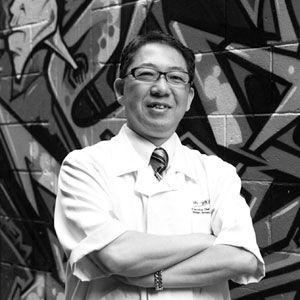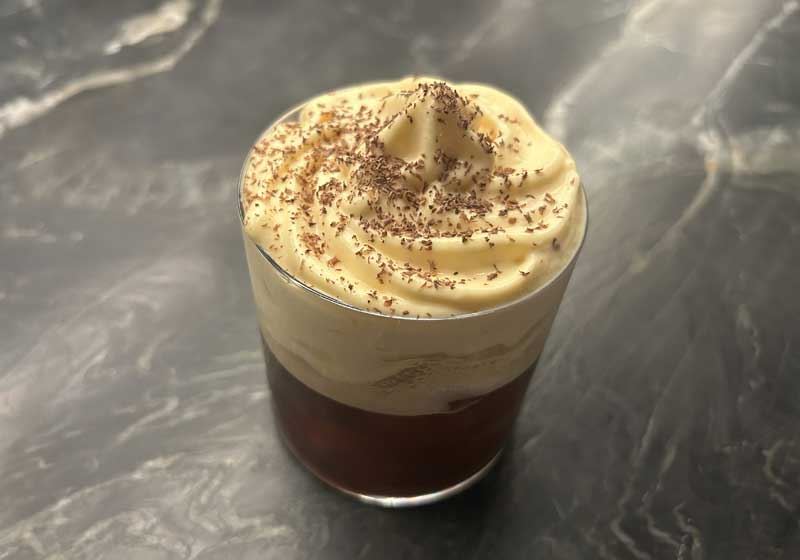
Chef Shigeo started working in the kitchen at the age of sixteen. For two years he worked at his parents’ home restaurant as a kitchen hand, however, at the age of eighteen he sought a more dominant role and traded dirty dishes for fresh fish.
It was at this restaurant that he found his passion for fish, learning about the appearance, bone structure and the texture of the meat. Shigeo’s culinary talents spread around the city with a luxurious Japanese restaurant seeking out his talents. Ryotei was soon to be the star chef’s new home. At nineteen, Shigeo entered the ninety-year-old establishment and began learning the trade secrets of Japan’s most famous kitchen. Many traditional and classic methods were employed here and this formed Shigeo’s basic cooking skills.
At the age of twenty-three, Shigeo had already gained a strong understanding of Japanese cuisine and the restaurant culture. He was still hungry for more and was thinking of going overseas after he saw a program on television about Japanese food in America. His passion to correct all the wrong beliefs surrounding Japanese food encouraged him to leave Japan for Australia.
He first arrived in Parramatta in New South Wales and landed himself a job in Shiki Japanese Restaurant as the sous chef; however, soon after he was head-hunted by the ANA Hotel and was employed as their Sushi Chef. Shigeo returned back to Japan for another three years to learn more about fish and his culinary love.
Looking for a new challenge, Shigeo chose Melbourne as his new home. About two years later, he met Ron Lim, a Malaysian entrepreneur and successful businessman, and they opened the doors of Shoya Japanese Restaurant in December 2003, in busy Chinatown. Shoya is the top Japanese restaurant in the city, serving high-quality fish from a well-travelled chef.
What are you thinking about when creating a signature dish?
I am always thinking about the combination of flavours. My
Golden Perch is an excellent example, a combination of miso-marinated cod, foie gras and tomato mousse. A miso-marinated cod itself is not special; foie gras alone is not special, but put the two together and it turns into something unique and delicious. Ox-tail was already popular, but not ox-tongue. I made use of this delicious part of the ox and I have customers coming to Shoya just to have this dish. Shoya was built on some of these dishes and they are very important to me.
Where did you get your inspiration from?
Imagination! Together with a strong basic skill, understanding of the ingredients, and a strong palate, I am able to taste the combination of ingredients in my mind, mixing flavours, colours, and textures.
What can we expect from you in the future?
I am not really sure, but I feel like I want to return to cooking traditional Japanese cuisine. Most restaurants are now going contemporary, using a lot of Japanese ingredients and techniques, and that was Shoya’s initial concept. So maybe I would like to go back to my roots — that would be very interesting.
What’s your earliest memory of food?
When I was a bit younger, my mother once brought me to a really good restaurant. I can remember that the food was really delicious and we had a good time. But suddenly, toward the end of our meal, my mother got really upset with the waitstaff that served us. I asked her what was wrong and she said they had started clearing the dishes before my mother had finished her meal. I could not understand why my mother would be so upset over a small matter like that back then.
But now, after being in the industry for a while, I can totally understand her feelings. A good restaurant cannot succeed only with good food. It has to go hand-in-hand with good service. Therefore, I always go around in my restaurant to greet my customers and make sure that all my waitstaff are giving the customers the best service.
What’s the best advice you’ve been given?
During my time in the Ryotei in Japan, my teacher said to me, ‘Everybody has different expectations. But we must satisfy at least 80 per cent of the patrons.’ Occasionally someone might not like the dish, but as long as I know at least 80 per cent of my customers are enjoying it, I will go on creating new dishes. Deep inside, I still strive to keep all 100 per cent of my customers happy though (laughs).
What advice would you give a novice cook?
Do not kill the ingredient! Never ever destroy an ingredient’s original flavour by adding too much sauce or other ingredients. Be adventurous in experimenting with flavours, but the original flavour and texture of the main ingredient must still stand above the rest in the same dish.
Weapon of choice in the kitchen?
Probably my mouth. To keep customers sitting on the sushi bar entertained and happy and, if in the kitchen, experimenting new flavours.













